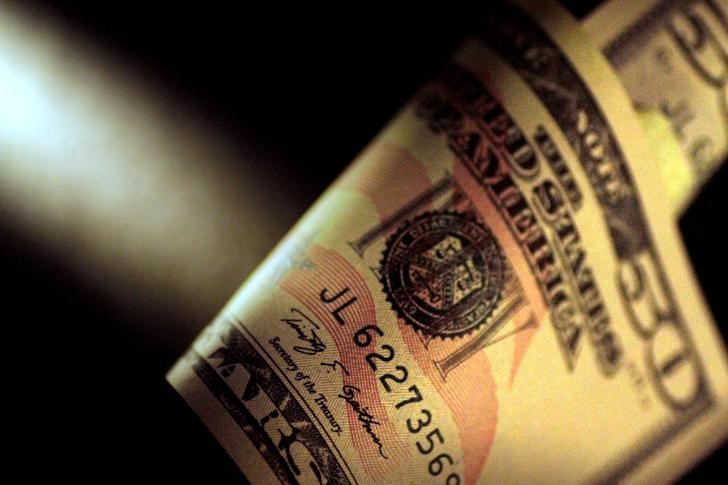The US dollar edged lower in early European trade Thursday
2022.07.07 10:31

The U.S. dollar edged lower in early European trade Thursday, handing back some of the previous session’s gains but remained near a 20-year high as the Federal Reserve retained a hawkish tone.
At 03:10 AM ET (0710 GMT), the Dollar Index, which tracks the greenback against a basket of six other currencies, traded 0.2% lower at 106.73, after climbing to a 20-year peak of 107.27 overnight.
The index is up almost 12% so far this year and is on track for its best year since 2014.
There are many factors driving the dollar’s gains, but prime among them is the aggressive monetary tightening by the U.S. central bank as it faces the worst inflation in decades.
The minutes from the last Fed meeting, released on Wednesday, pointed to the possibility of an “even more restrictive” monetary policy to prevent long-lasting inflation, and now investors are pricing in another 75-basis point interest rate hike in July.
At the same time this tightening, by the Fed and other central banks, risks throwing the global economy into a recession, which the United States is likely to weather better than most other countries.
“The big question for financial markets is whether this deterioration in growth prospects is enough to curtail tightening cycles – especially that of the Fed,” said analysts at ING, in a note.
EUR/USD rose 0.2% to 1.0197, bouncing after sinking as low as 1.0160 on Wednesday, for the first time since late 2002, as Europe’s energy woes threaten the region’s economic outlook.
The European Central Bank will publish the minutes of its last meeting later Thursday, at which the policymakers decided that a rate hike of 50 basis points would be appropriate in July.
Europe’s inflation is running at record levels and surging energy prices suggest the upward pressure on consumer prices will remain substantial for a while longer. That said, German industrial production grew just 0.2% on the month in May, a dramatic slowdown from the revised higher 1.3% growth the previous month.
“The question will be how much tightening the ECB can get done before the growth shutters come down,” ING added.
GBP/USD rose 0.3% to 1.1961, remaining close to a two-year low with British Prime Minister Boris Johnson fighting to keep his job amid a mounting rebellion within his party.
One of the key departures from Johnson’s cabinet was Rishi Sunak, who quit his role as Chancellor, the second most important position in government, on Tuesday.
“It is not clear whether the new chancellor, Nadhim Zahawi, will represent a shift in economic policy, although he may be tempted to loosen up fiscal policy earlier than expected,” ING added.
USD/JPY fell 0.1% to 135.81, with the Japanese yen, another safe haven, in demand, while the risk-sensitive AUD/USD rose 0.5% to 0.6807, helped by the bounce in the global equity markets.
USD/PLN dropped 0.5% to 4.6689 with Poland’s central bank expected to raise interest rates for the 10th month in a row later Thursday to quash inflation. Most economists surveyed by Bloomberg see the central bank raising its benchmark rate by 75 basis points to 6.75%.








